Pink Bollworm Wreaks Havoc On Haryana’s Cotton Crops
Farmers are facing a bleak season
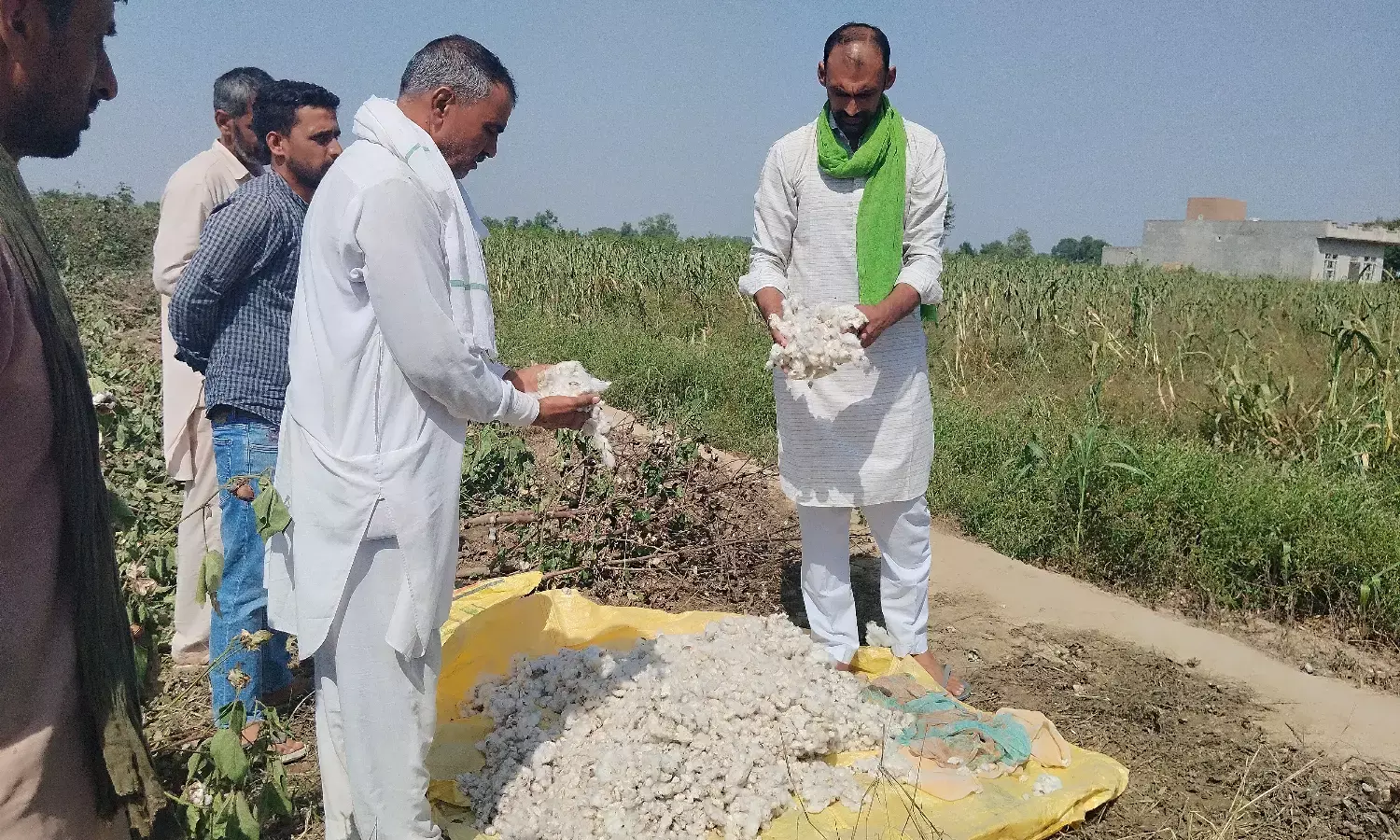
A distressing turn of events has resulted in the hardworking farmers in Sirsa, a prominent cotton belt region in Haryana, losing their crops to pink bollworm infestation. This once vibrant cotton landscape, often compared to pristine snow fields, has now been devastated by the worms.
The pink bollworm is a dangerous insect that consumes cotton seeds and destroys plant fibre, lowering both the quality and yield of the crop. These virulent pests have decimated the livelihoods of numerous cotton farmers.
The agricultural community is confronted with the sobering reality of mounting losses and dashed expectations, and the once-green fields of Sirsa are now a sea of pink and black cotton infested with bollworms. The once-optimistic and resilient farmers of Sirsa are now imprisoned in a vicious cycle of hopelessness.

Speaking to The Citizen, Meghraj Swami, a farmer from the Sirsa region of Haryana, explained that these pests are born inside cotton balls and at first you can't see them. “We've been trying hard to get rid of them by spraying, but it's not working because they're hiding inside. Our crops are getting completely ruined because of these bugs.
“They've been bothering us since 2021, and even though we've asked the government for help many times, they haven't done anything to assist us.
“Six months after planting the cotton seeds, pests have started to appear on the cotton plants. At this point, farmers are unable to take any effective action other than using pesticide spray.
“However, even the pesticide spray doesn't seem to work well. It appears that the government may have provided farmers with artificial or low-quality seeds that are more susceptible to pests and may not yield healthy crops”, Sandeep Beniwal, a farmer based in Sirsa, said.
Meanwhile, Dr Ram Pratap Sihag, joint director (cotton) in the Haryana agriculture farmers’ welfare department, stated that there hasn't been any damage to the cotton crops this year. However, when told that farmers had reported significant damage to their crops as a result of the pink bollworm, he said, “it depends on crop management.”
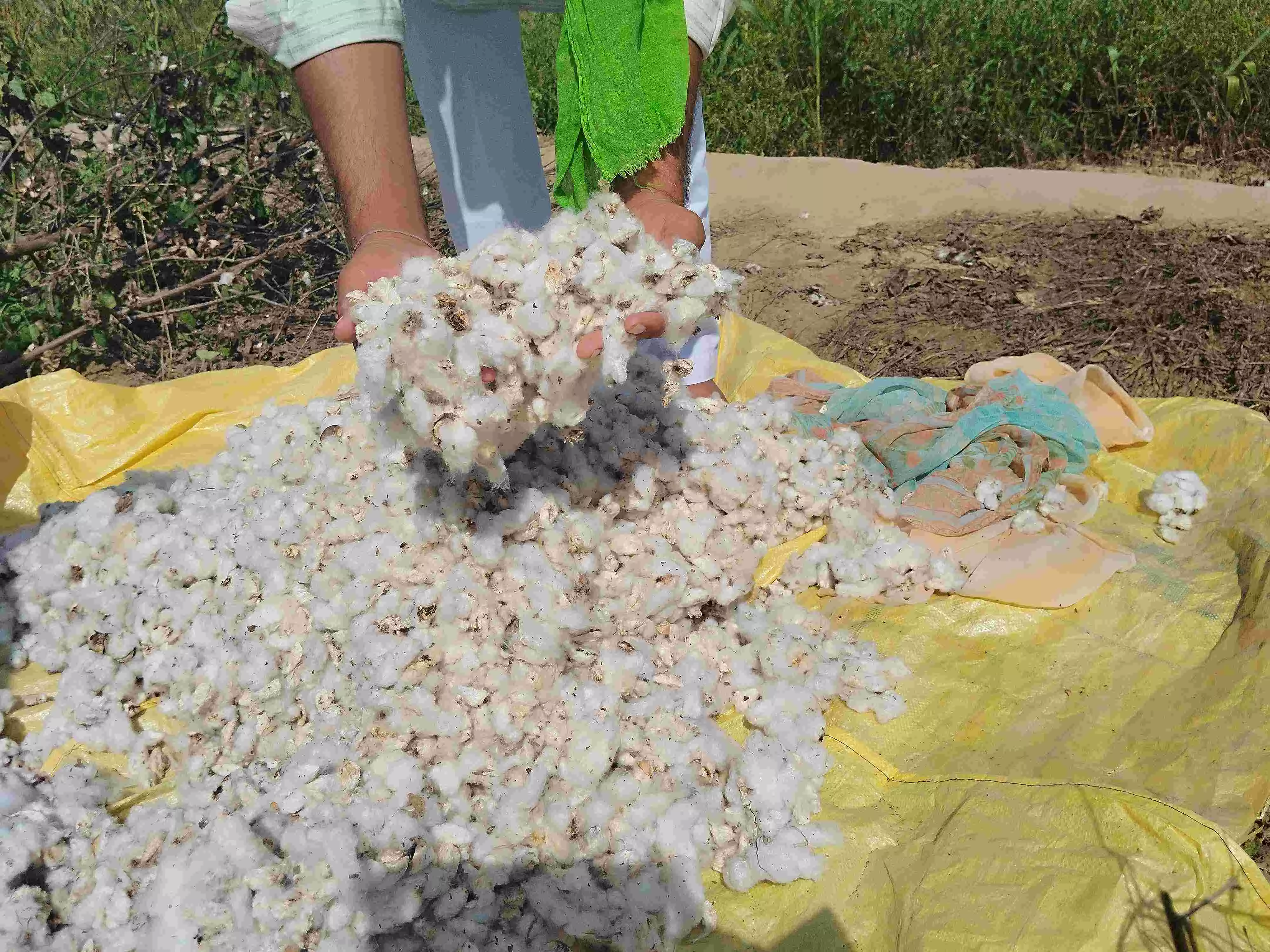
According to Dr. Sihag, farmers who manage their crops properly, typically produce higher yields, while those who don't run the risk of crop damage. He added that they don't yet have the precise numbers when asked about the crop losses caused by pink bollworms. Only once the comprehensive report is made available after a survey, will the departments get a clearer picture.
According to Dr. Sihag, the cotton production in Haryana is anticipated to increase this year. “Last year, the average yield in Haryana was nine quintals per hectare, and this year, in the first picking, farmers have already taken 10 quintals per hectare. This indicates that cotton production in Haryana is likely to be significantly better this year”, Sihag said.
When questioned about government compensation for losses inflicted by the pink bollworm, an agitated farmer named Prithvi Beniwal from the Kalan Darban village in Sirsa, exclaimed, "What does compensation do? It doesn't help at all. This government gives Rs. 10,000 per acre to farmers, but we've suffered a loss of Rs. 30,000 per acre of land.
“What good is Rs. 10,000 in compensation? It doesn't even cover our family's expenses. We've already sprayed pesticides eight times, and the seeds they provided us were expensive.
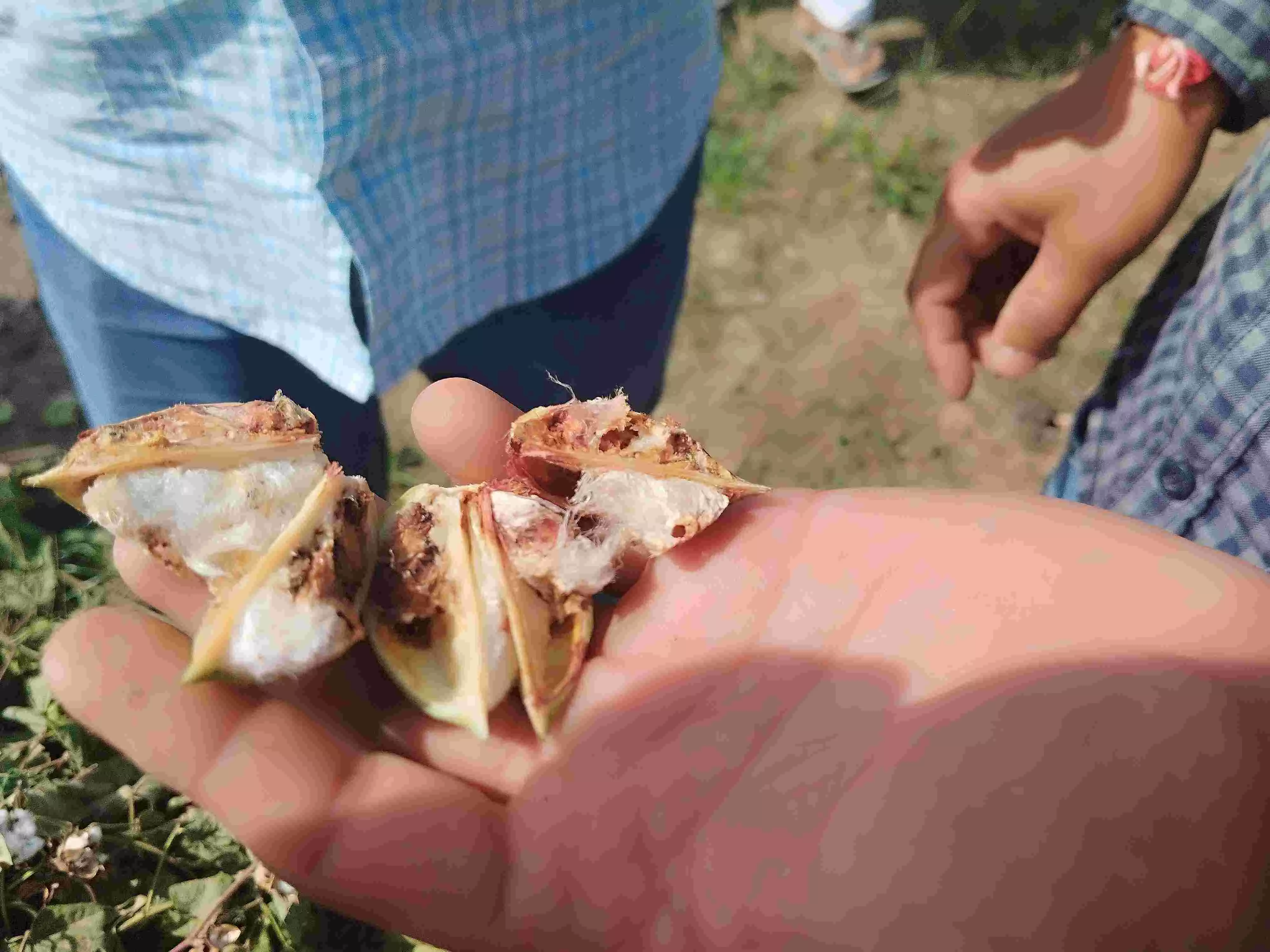
“Farmers like us aren't getting any support. Even to buy fertilisers, we have to stand in long lines, and they ask for Aadhar cards. Sometimes, we don't even get seeds on time.”
He added, “When we went to purchase seeds, the sellers informed us that this year, there would be a pest problem in the cotton plants. Farmers had no prior knowledge of this, but the sellers were already aware.
“When we inquired about the pesticides for it, they stated that there was no remedy available. However, later on, we discovered that the duplicate pesticides for this issue were available in the market”.
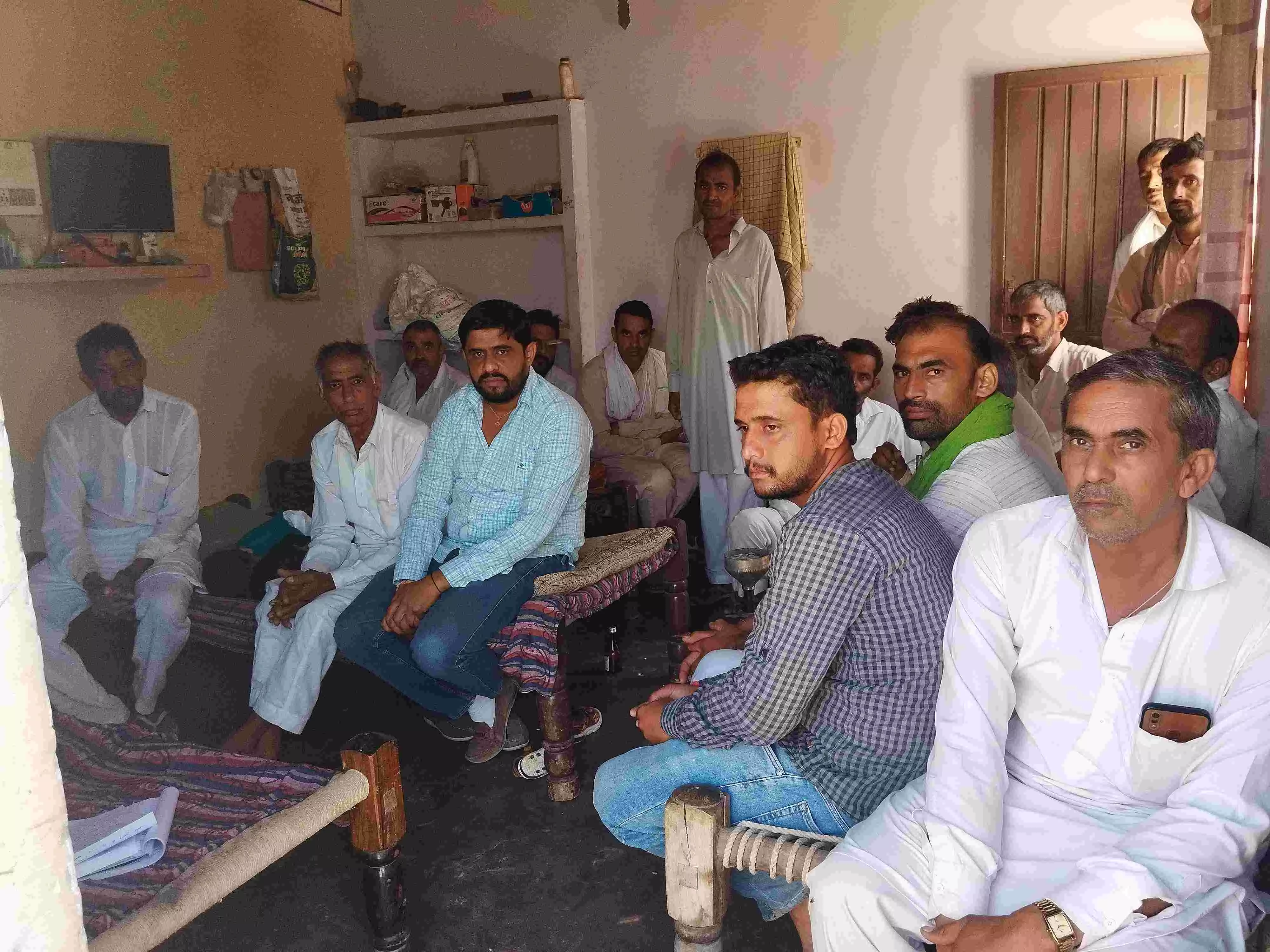
When asked how pesticides suddenly became available overnight, the farmers said, "How would we know? Perhaps the company made them available. Everything has failed now because we cannot obtain good-quality seeds and good-quality pesticides”.
While talking about the increasing suicides among farmers in India, farmer Prithwi shared the problems farmers face due to poverty. He said, "We don't have money to get our children married, they say, 'Educate your children.' But where do we educate them?
“Education is free up to the 10th grade, but after that, we have to pay fees. Where will we get the money? The children of wealthy people go to universities, but the children of farmers start working in the fields after the 10th grade. After all this, what will the farmers do? Suicide seems to be the only option they have."
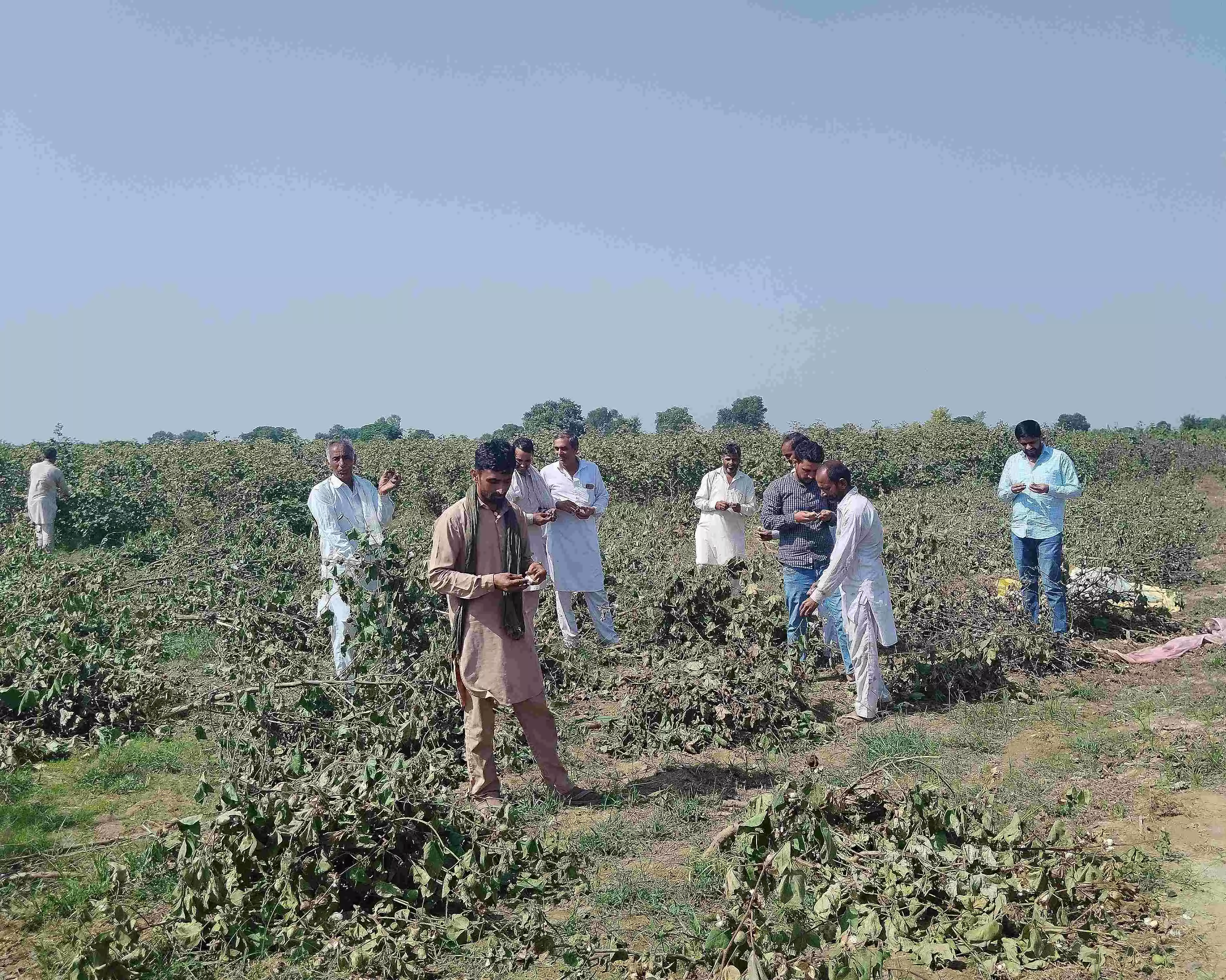
According to the The National Crime Records Bureau (NCRB) report, published in 2021, people working in agriculture accounted for a significant 6.6% of all suicides reported in the nation. This translates to a tragic toll of 10,881 lives lost within the farming community in 2021 alone. This is a startling figure, signifying that approximately 15 farmers and agricultural labourers ended their lives each day throughout the year.
Further analysis of the data exposes a stark gender divide within these statistics. Out of the 5,318 farmer and cultivator suicides, 5,107 victims were men. This underscores the immense burden placed on men in the agricultural community. Equally tragically, 211 female farmers fell victim to this crisis, highlighting the struggles faced by women in agriculture as well.
However, the issue isn't confined to 2021 alone. Recent figures provided by the Maharashtra government indicate that 1,023 farmers have taken their own lives between July 2022 and January 2023, during the tenure of leaders Eknath Shinde and Devendra Fadnavis.
In the two-and-a-half-year rule of the Maha Vikas Aghadi administration, led by Uddhav Thackeray, a staggering 1,660 farmers died by suicide. In Haryana, the situation remains grim as well, with Home Minister Anil Vij in 2021 disclosed in 2021 that 11 farmers have committed suicide in the last three years in three districts.
These numbers paint a harrowing picture of the challenges faced by those who work tirelessly to feed the country.
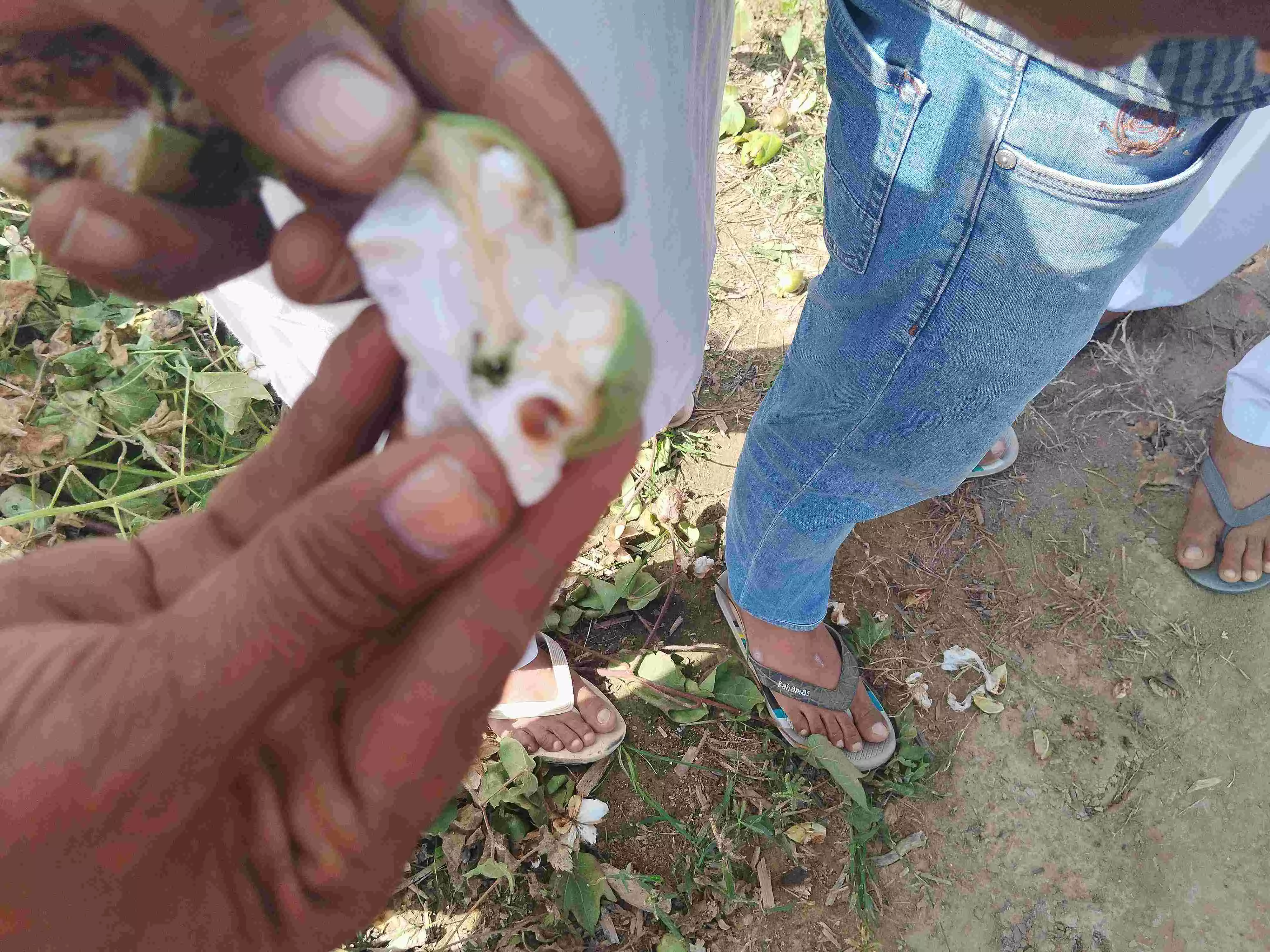
On Monday, social media platform X (formerly known as Twitter) brought to light the disastrous state of the Haryana cotton crop. J.P. Dalal, the state's minister of agriculture and farmers' welfare, posted photos of him surveying the destroyed crops in a field, drawing attention to the issue.
In his post, Dalal stated in Hindi, "Inspected cotton crops on the way from Siwani to Bhiwani. I am a farmer's son, and I am always there to support the farmers in their moments of joy and sorrow."
According to Aman Darba, Youth State Secretary and member of Bhartiya Kisan Union, based in Kalan Darban village in Sirsa, farmers are provided with insurance policies, but they aren't given information about the rules and regulations within those policies.
Farmers often receive just a policy number, specifying when the company will provide insurance coverage and the premium they need to pay. During crop cutting, company agents visit villages to assess which crops have suffered losses, and they report this information to the company. Then, the company returns the premium to the farmers.
When the company knows that a farmer's crop has been damaged, why don't they provide insurance instead of returning the premium? This year, 50 percent of farmers didn't receive insurance even though 100 percent of their crops were damaged, he pointed out.
Aman Darba is also active in state politics. He speaks up on issues affecting his village and has participated in several ongoing protests there. In 2020, he joined the farmer protest against the three Farm Acts.
In May 2023, he joined other farmers on a hunger strike demanding Rs. 680 crore in insurance for crops that were damaged in 2022. In September, they received assurance for Rs. 650 crore, but Rs. 30 crore is still pending. The protest continues, although they ended their hunger strike after receiving this assurance.
However, these protests have not been easy for the farmers. The police have filed cases against 16 farmers, including Dabra, for blocking NH 9.
“Whenever a government minister visits their village, the police come to our homes and issue notices, suggesting we might protest against the minister. They protest for their rights, but the government responds by filing cases against them”, Darba said.
According to farmers, the government provides a compensation of Rs. 7,000 per acre of land to farmers, but the expenses incurred by farmers from seeding to harvesting amount to around Rs. 1 lakh. Farmers are left wondering how they can cover their costs with just Rs. 7,000.
“The company stated that this year they don't have any insurance, unlike last year when the entire crop was covered. Whom should we now address our concerns with and to whom should we do so? Right in front of you, the crop has suffered severe damage, Chander Bhan, a farmer based in Sirsa, said.
When asked about the solution to the recurring issues of farmers, Darba said, "The solution to this problem is for the government to prioritise farmers. It's been nine years of the Modi government in our country, and while Modi talks about 'Digital India' on foreign trips, if this government wants to make our country agriculture-centric, they should provide good-quality seeds and complete fertilisers to farmers. When farmers suffer losses in their crops, their loans should be forgiven.”
Aman Darba, Bhartiya Kisan Union member, said “When crops fail, companies refund farmers their premiums, even though farmers really need insurance at that time. The government should pay attention to this issue and make sure companies don't do this to farmers. This year, farmers didn't even get a chance to insure their crops properly. Only 50 percent of farmers were insured, but the entire crop has been ruined. The Haryana government has announced compensation of Rs 8000 per acre of land, but Rs. 8000 is not enough for farmers. The government should provide at least Rs. 50,000 per acre of land so that farmers can repay the people they borrowed money from to lease the land”.
While discussing seed quality, Santhala Rupna, a farmer from Sirsa, said, "Farmers are not satisfied with the current seed quality. We strongly urge the government to supply BT-4 and Bt-5 seeds to farmers instead of Bt-2. This shift would significantly benefit farmers as Bt-2 seeds often lead to complete crop loss due to pink bollworm infestations. The Rs. 8000 compensation, it won't even come close to covering the cost of the seeds. The government should consider providing compensation of at least Rs. 40,000 to support us, the farmers."
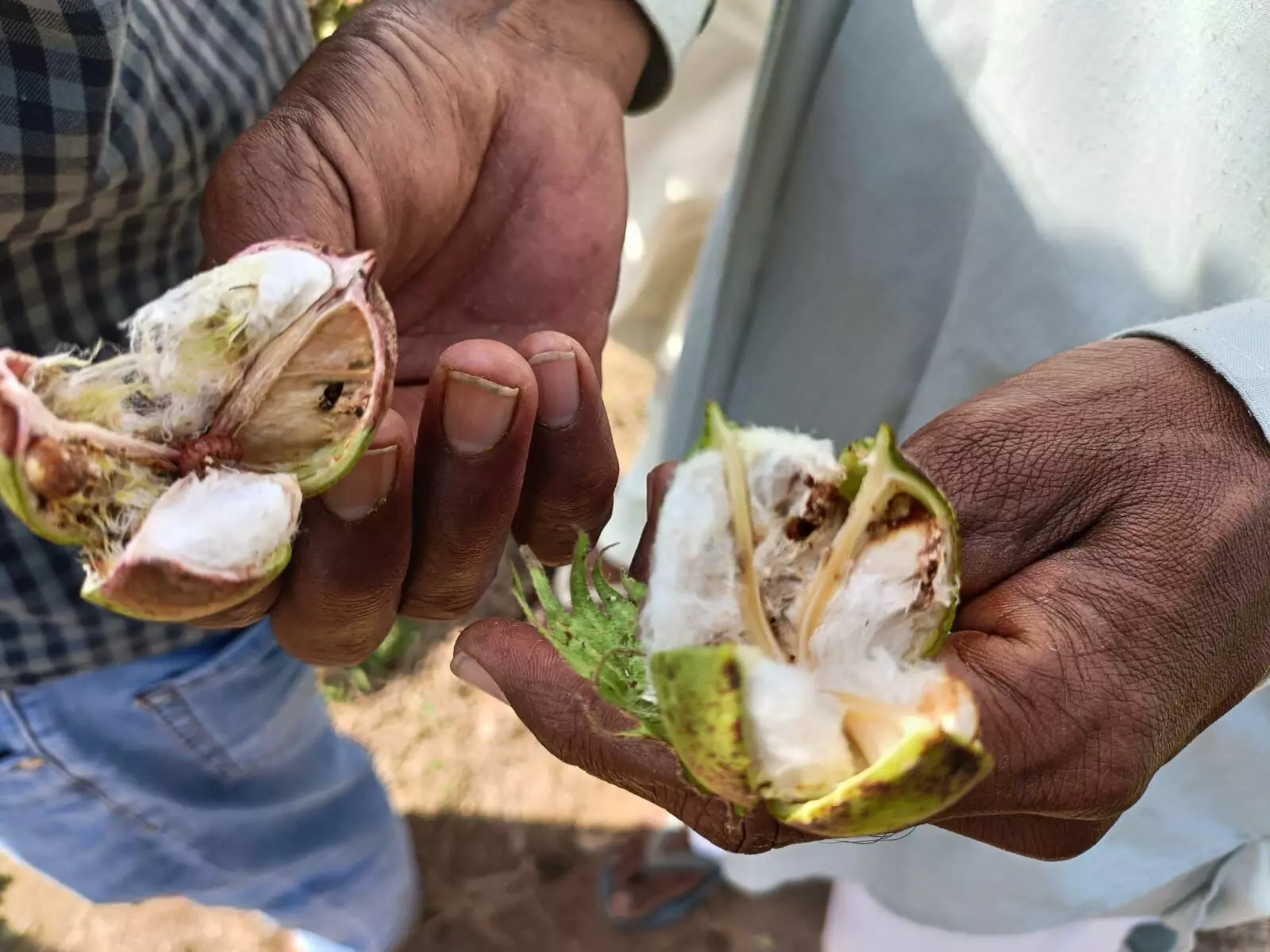
All photographs Snobar.


